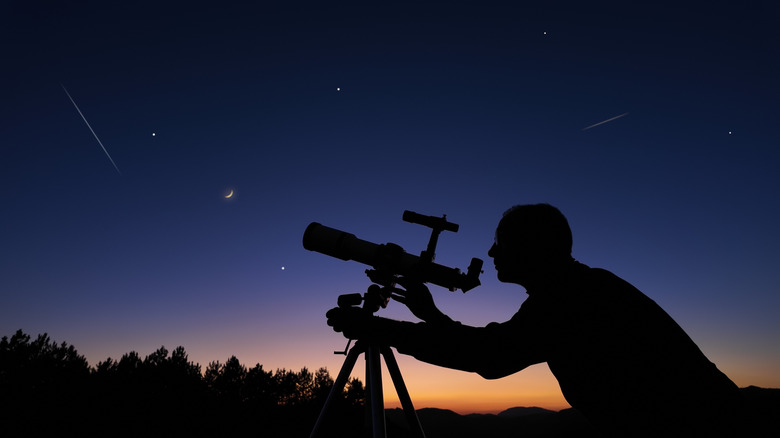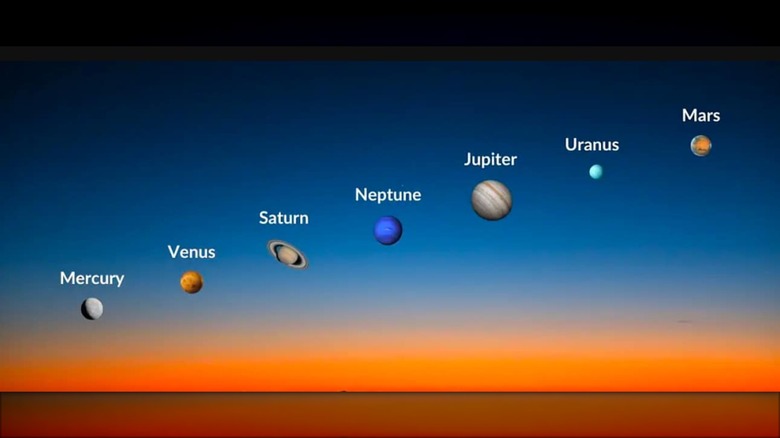The Rare Planetary Event You Don't Want To Miss In February 2025
Humans have been watching the night sky in awe for tens of thousands of years, starting with ancient cultures noticing how the moon changes shape and position in relation to the stars. Our curiosity hasn't waned either as we continue to be struck by the various patterns we see when we look up. For instance, what is it called when the planets line up? It's a planetary alignment, and we have a rare one involving all the planets in our solar system (except for Earth, of course) coming up at the end of February 2025.
Planetary alignments are common, happening at least a few times a year with two to four planets, which are considered mini and small planetary alignments. They happen as the planets orbit the Sun on the imaginary, flat plane — the ecliptic — and end up on the same side of the Sun simultaneously. From our point of view on Earth, they eventually line up in a row in the sky, although the line is never perfectly straight because of the planets' deviations in relation to the ecliptic. Large planetary alignments involving five or six planets are less common, but full (great) planetary alignments of all seven planets are the rarest and exactly what you'll see this year.
On February 28, 2025, (from west to east in the Northern Hemisphere) Saturn, Mercury, Neptune, Venus, Uranus, Jupiter, and Mars will appear in a line across the night sky. You'll be able to see five of these planets without any equipment, but like with the January 2025 planetary alignment, you'll need a telescope to find the planets Neptune and Uranus because they're so far from the Sun that they don't shine bright enough to be seen without one.
Best time, location, and equipment to see the rare planetary alignment
If you plan to see the great planetary alignment of February 28, 2025, your timing will need to be right because Saturn and Mercury will appear very close to the Sun. When the Sun and planets are really close to each other from our point of view, it makes them more difficult to see. This also means that you have a shorter window in which to see them before they disappear from view.
While your timing is important, your geographical location isn't as vital because the event will be visible from anywhere on Earth. For optimal viewing, though, you should get away from city lights, especially to get a good glimpse of Saturn and Mercury. It's helpful when the sky is clear of clouds, too, but that's not within your control unless you can travel to somewhere with minimal cloud cover.
Additionally, having the right telescope will make it easier to find Uranus and Neptune in the line-up. While Uranus can be viewed with a telescope that has at least 4 inches of aperture at about 150 times magnification, you'll need a telescope with at least 8 inches of aperture and 100 times magnification to observe Neptune.

